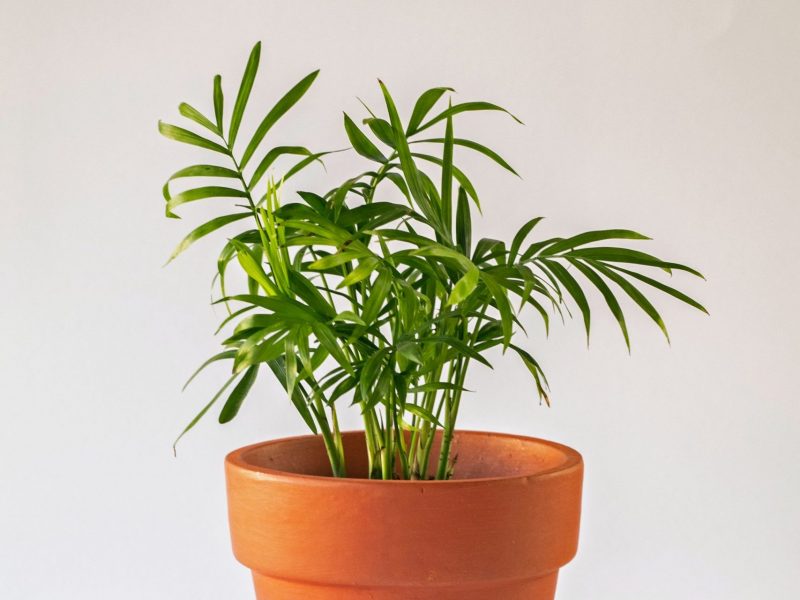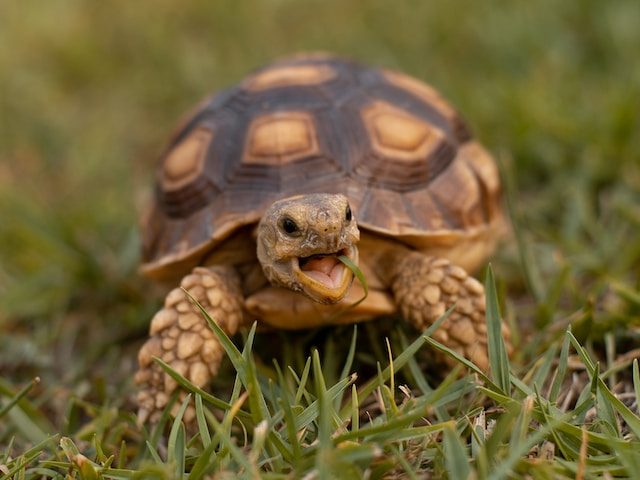
Love Palms but have a small space, the Parlor Palm is your answer. These luscious plants bring that little bit of the tropics right to your home. However, as they have quite long and thin leaves, they are susceptible to quite a few issues if things aren’t right.
Luckily, you’ve come to the right place as below you’ll find an outline of each of the different causes of some of the most common issues such as brown leaves, yellow leaves, a drooping palm or leaf drop. We’ll help you diagnose the issue, treat it and also prevent it from happening again to your Parlor Palm in future.
Causes of Parlor Palm brown leaves
Underwatering.
Whilst your Parlor Palm will forgive you for the occasional lack of water, if the problem persists, your plant will most likely develop brown leaf tips and edges. Before you start pouring a bucket of water over your Parlor Palm to make up for lost time, it’s important that you’re 100% sure it’s the cause of the brown leaves.
The best way to do this is to take your plant out of its pot and feel how dry the potting mix is. If your Parlor Palm is underwatered, the potting mix will be dry and crumbly and the roots may look crispy. To solve the issue and prevent more brown leaves, water your Parlor Palm a little bit once a day for about a week and use a moisture meter to keep track of how much water your Parlor Palm needs in future. These go a long way to preventing issues such as brown leaves.
Overwatering.
Funnily enough, too much water can actually lead to similar issues as a lack of water, including brown leaves. Once the roots have rotted in waterlogged soil, your Palm isn’t able to get all the nutrients it needs and becomes unstable and droopy and the leaves will begin to turn brown.
If you find the potting mix is waterlogged and clumpy then replace it with fresh dry mix straight away rather than letting it dry naturally. This means the plant can start to recover and prevents any further stress on the roots. Moving forward, cut back on either how much water you give your Parlor Palm or how frequently you water it.
Low humidity can cause brown leaf tips.
If the issue doesn’t lie in the watering, it could be a lack of humidity that is causing your Parlor Palm’s leaves to turn brown. Parlor Palms like quite humid environments and can struggle in homes with dry air.
This can be especially damaging in the winter months due to central heating which really dries out the air. Get into the habit of misting your Parlor Palm or invest in a humidifier to solve the issue and prevent dry air from causing further brown leaves in future.
Causes of Parlor Palm yellow leaves
Overwatering.
More often than not, overwatering is the cause of your Parlor Palm’s yellow leaves. If their soil has become waterlogged this will cause the roots to rot and become mushy.
Confirm the issue by removing your Parlor Palm from its pot and inspecting the root system. Replace any waterlogged soil with fresh dry mix and adjust your watering schedule so that you give enough time for the potting mix to dry out. This will really help prevent any more yellow leaves from cropping up in future.
Overfertilisation.
Parlor Palms don’t need to be fertilised that often, or even at all as you can still see plenty of new healthy growth each year without any feed. If you are fertilising your Parlor Palm during winter or at very regular intervals during summer, then it may be the cause of the yellow leaves.
Remove any slow-release fertiliser spikes or just stop adding fertiliser to the water and you should start to see the problem stopping. If the issue of yellow leaves has progressed quite far, you might choose to replace the potting mix to remove any excess fertiliser.
Direct sunlight.
If the yellowing on your Parlor Palm’s leaves is quite patchy and looks scorched then it may be due to too much direct sunlight which has burnt the leaves. Parlor Palms like areas with bright light, but it needs to be indirect so try to avoid placing it right next to a window.
Whilst this won’t be so much of a problem during winter, intense sunlight during summer can damage your plant and cause yellow leaves as well as cause hotspots which dry out the leaves. To solve the issue, move your Palm to a slightly shadier spot in your home.
Parlor Palms begin losing leaves for a variety of reasons
Stress and shock.
Whilst Parlor Palms aren’t the most sensitive of houseplant types, it can be quite normal for them to experience stress or shock which causes them to start losing a few leaves.
They don’t like to be moved around too much and a sudden change of environment can be quite harmful to your Parlor Palm leaf. Different lighting and humidity levels can also be quite a shock to your Parlor Palm and it may take some adjusting before the new environment becomes its new comfort zone.
As long as the new environment caters for its light and space requirements, it should adjust nicely, stop losing leaves and regain strong and healthy growth.
Cold temperatures.
Another one of the most common reasons why Parlor Palms start losing their leaves is due to inconsistent temperatures, particularly cold temperatures.
If your plant is exposed to low temperatures (the ideal temperature for Parlor Palm is between 18°C – 24°C), it can often cause them to go into shock and some leaves will drop from the plant. Cold drafts can be caused by a range of things but doors or windows with small cracks are your Parlor Palm’s worst enemy.
We really recommend buying a digital thermometer to check the temperature around your Parlor Palm and prevent it from losing any more leaves.
Why is my Parlor Palm drooping?
Underwatering.
Too little water can harm your Parlor Palm in more ways than one but one of the earlier signs of underwatering is drooping leaves. Stick a finger in the top few centimetres of the soil to check the moisture or use a moisture meter if you have one.
If the potting mix is very dry then slowly reintroduce water over the next week rather than drowning it all at once (as this can cause shock and more drooping leaves). Investing in a moisture meter would be a great idea to prevent your Parlor Palm from drooping in future and if you really just want a set-it and forget-it solution, getting a self-watering pot could be the one for you.
Overwatering.
Similarly to underwatering, too much water can have the same effect and cause your Parlor Palm to start drooping. This is because once the roots have started to rot, your plant won’t be able to get the nutrients, moisture and oxygen it requires.
If you think that you may have overwatered your Parlor Palm it is best to replace the soil straight away rather than just sit and wait for it to dry up over time. Make sure to use fresh, nutrient rich soil when you do this, our recommendation is this one from Miracle-Gro.
Moving forward, adjust your watering schedule so that your Parlor Palm’s soil has time to dry out between waterings and this will help prevent your plant from drooping again in future.
Causes of curling leaves on a Parlor Palm
Low humidity can cause curling leaves.
Whilst Parlor Palms can withstand the normal humidity level in your home, they don’t do so well with dry air and this could be the cause of the curling leaves.
Using a humidity monitor will help you diagnose this issue as it isn’t as obvious as lighting or moisture problems. To increase the humidity, get into the habit of misting your Parlor Palm or using a humidifier to do the work for you!
Another cause of curling leaves on a Parlor Palm is underwatering.
Houseplants start curling their leaves to prevent moisture loss so this is always a good place to start when diagnosing the issue (and keep it in mind for other houseplant types too). Confirm whether the curling leaves are caused by dry soil by inspecting the potting mix.
To solve the issue, water your Parlor Palm lightly each day for one week before returning to a more regular schedule. This helps moisten the soil without causing stress.
Water sensitivity could also be to blame.
If watering and humidity issues are not causing your Parlor Palm any harm, then it might be sensitive to excess minerals in the water. They can build up around the roots and cause issues over time.
The first sign of trouble is usually curling leaves or brown leaf tips. Start watering your Parlor Palm with filtered, distilled or rainwater if you live in a hard water area.
Those are the main issues that plant parents face with Parlor Palms. To learn more about how to keep your plant happy and healthy, check out our Parlor Palm care guide.














